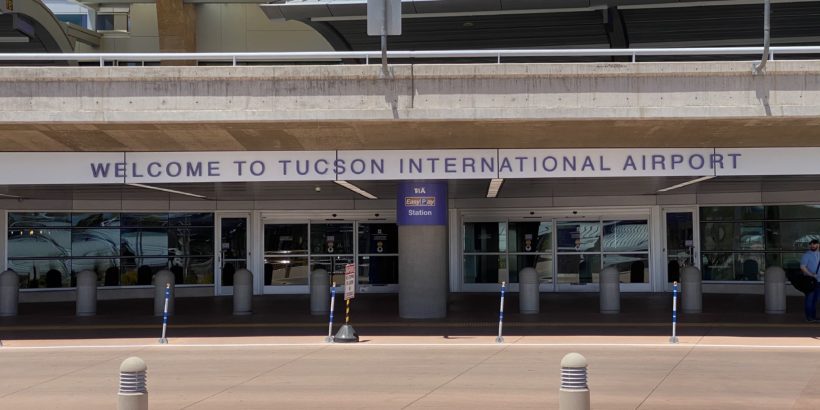One of the most commonly asked questions is, “How early should I get to the airport?” While there are general guidelines, the most accurate answer to this question relies on a multitude of factors.
In this article, I will take a deep dive into all of the factors you need to think about when trying to decide how early to get to the airport.
I’ll also provide you with those important cut-off times that many major airlines abide by when it comes to things like checking in your bags and arriving at the boarding area.
Table of Contents
How early should I get to the airport?
The standard recommendation is to arrive at the airport two hours prior to your domestic flight and three hours prior to your international flight.
These blanket recommendations are not super helpful because they don’t factor in things like if you are: returning a rental car, checking luggage, flying business class, familiar with the airport, enrolled in TSA Pre-Check, etc.
I’ll talk about how all of those things affect the timing of when you should arrive at the airport below.
But first, here are some general cut-off times to keep in mind. The exact cut off times will vary based on your airline, aircraft, and route.
Check-in
These are the latest times you should check in for your flight:
- Domestic: 30 to 60 min before departure
- International: 1 to 1.5 hours before departure
Checking bags
These are the latest times you should check bags for your flight:
- Domestic: 30 to 45 min before departure
- International: 60 min+ before departure
Arrive for boarding
These are the latest times you should arrive at the gate for boarding:
- Domestic: 15 to 30 min before departure
- International: 45 min+ before departure
So at a minimum you need to do whatever it takes in order to comply with the above cut-off times.
For your reference, I’ve included the check-in time pages for major US airlines:
Note: airlines often have a small grace period of a few minutes so if you missed the cut off time by just a couple of minutes you may still be okay.
Below, I’ll give you a number of factors that could impact how long it takes you to get through the airport.
Related: Why You Should (And Shouldn’t) Check in Online for Flights
Tip: Use the free app WalletFlo to help you travel the world for free by finding the best travel credit cards and promotions!
Are you flying domestic or international?
As mentioned, the standard advice is to arrive at the airport two hours prior to your domestic flight and three hours prior to your international flight.
Some international airports have recommendations for getting to the airport extra early such as at least four hours prior to departure, even if you are not checking baggage.
Why so early for international flights?
One reason is that international flights often have larger aircraft which means more people need to board. Consider that an A380 holds over 850 passengers while a 737 holds about 160 passengers. That’s a massive difference.
Also, because these are international trips people are more likely to bring lots of checked baggage which takes more time to handle.
And finally, some airports process immigration/services upon exiting the country which causes a further delay.
Related: What Time Does the Airport Open? What 24 Hours Really Means
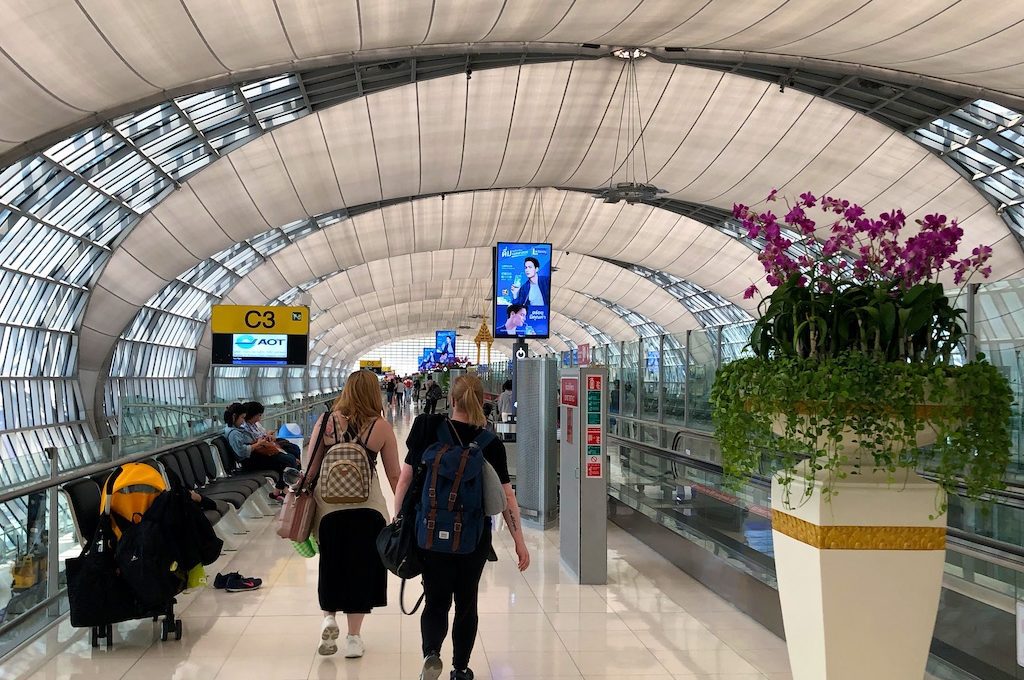
Are you parking a vehicle?
Knowing where to park is not always the easiest task at an airport.
Sometimes when navigating a busy airport corridor with dozens of signs overhead, it’s difficult to find the entrance to the right parking lot. One missed exit could mean an extra 10 to 20 minutes for your journey.
Also, knowing where you are going to be spit out from the garage is also challenging to predict at times.
If you are arriving during a busy time you might have to circle up many floors to find an open parking spot which can take some time — not to mention the slow elevator you might be working with.
If it’s a large, flat parking lot, you might have to park far away from the entrance of the airport which means dragging all your luggage to the terminal.
If you choose to do a park and ride or some type of economy parking then you will need to factor in the time it will take you to take a shuttle or tram to get to the airport.
I usually allocate about 15 to 20 minutes from my arrival time at the airport to find parking and get back to the terminal.
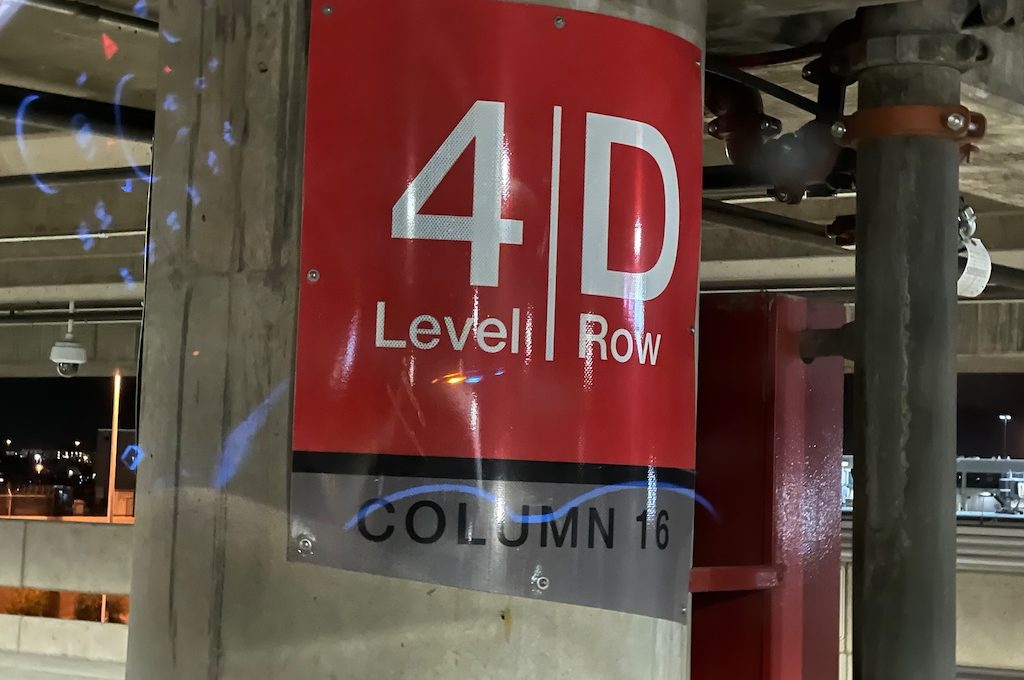
Are you returning a rental car?
If you are returning a rental car then you need to factor in the time it will take you to locate the rental car facility, drop off your vehicle for the post-rental inspection, head over to the shuttle terminal, and then take the shuttle to your terminal (if needed).
This usually will add around 20 to 30 minutes but if there is a long line or there are any issues with your rental car check-out it could go even longer.
Also, sometimes the shuttles are running extra slow and there could be multiple stops between the rental car station and your airport terminal.
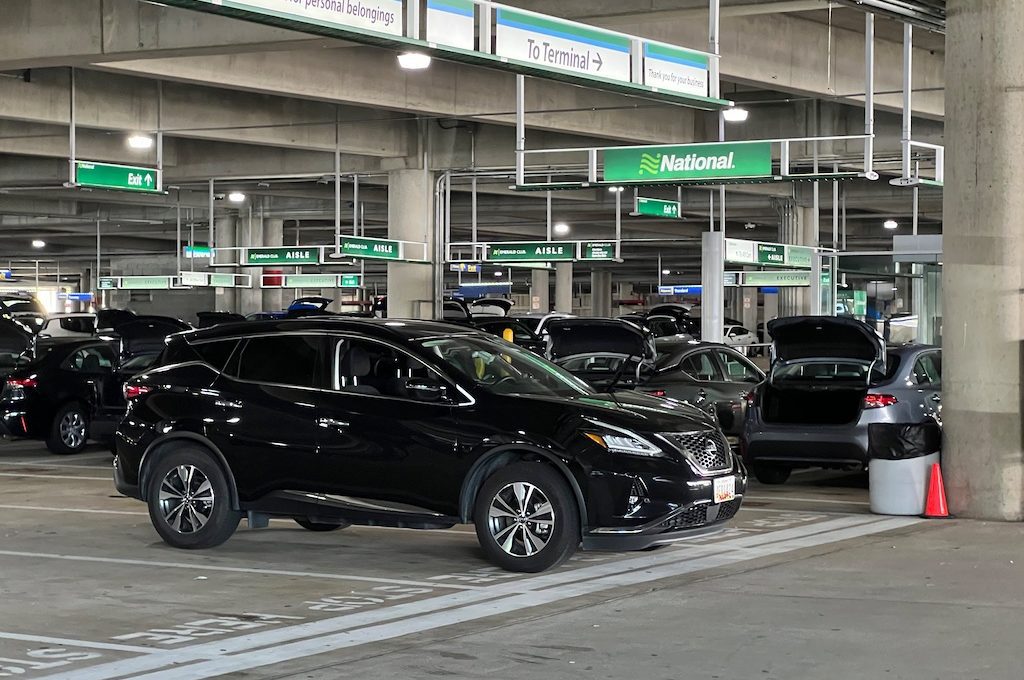
Are you checked-in w/a boarding pass?
For domestic flights, you usually have to be checked in at least 30 minutes to 60 minutes prior to your flight in order to board.
For international flights, you usually have to be checked in one hour prior to your flight although some airlines and airports may require you to check-in even earlier than that.
Some people still like to print out a hard copy of their boarding pass via the kiosks or the check-in desks. If you want a physical copy, the quickest route will usually be the kiosks since there is barely a line for those.
If you’re comfortable just showing your boarding pass on your phone then you don’t have to deal with those at all.
Sometimes you may want to make a change to your boarding pass or upgrade it such as when flying Southwest Airlines and upgrading to Business Select. In that instance, you may need to head to the full service desk which can add time to your check-in experience.
Are you checking your baggage?
Another major consideration is are you checking your baggage? Sometimes the line for checking luggage can get out of hand especially if an airline is short-staffed.
If you are bringing a gun, a pet, or shipping off an unaccompanied minor you want to give yourself more time at the check-in area.
The earliest you can usually check your luggage is three hours prior to your domestic flight and four hours prior to your international flight but it does vary based on the airport and airline.
You also need to consider that airlines have a cut-off time for checking baggage.
For domestic flights, you usually have to check your baggage 45 minutes to one hour prior to departure and for international flights it is usually at least one hour prior to departure.
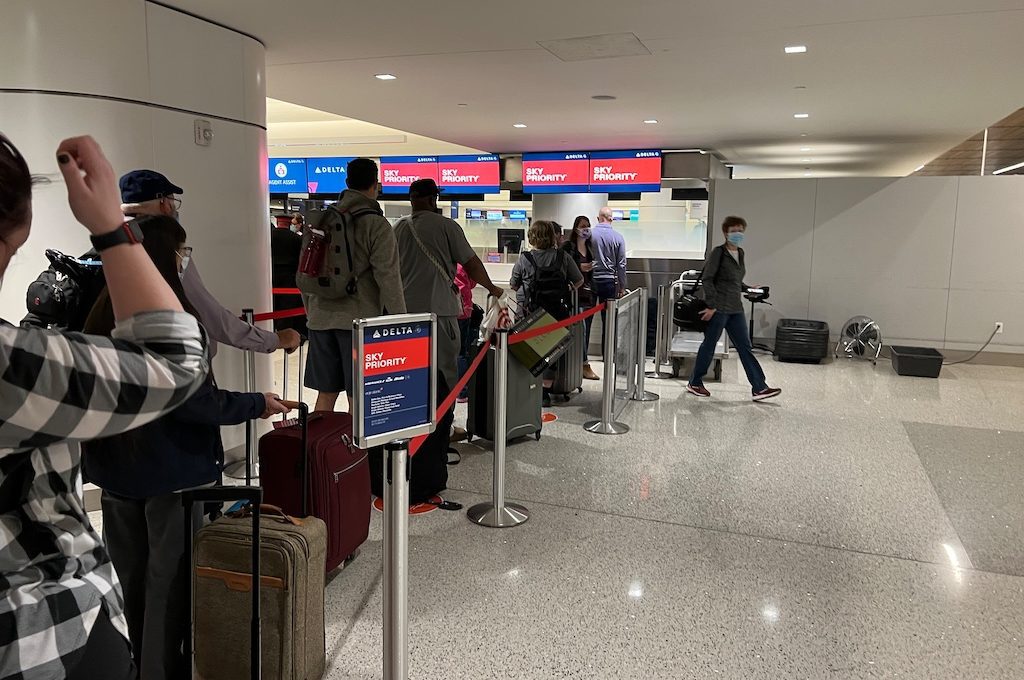
Do you have elite status or a premium ticket?
If you have elite status with an airline or are flying first class or business class then your check-in time to obtain your boarding pass/check your luggage can be dramatically cut down.
You will typically be able to head over to the elite desks which are often organized based on the type of elite level that you have or cabin you are flying.
These premium desks are usually less crowded than the desks open to non-elite/economy passengers. On a number of occasions my wait time for checking a bag when flying United first class has been zero.
But that is not always the case.
Sometimes the elite desks only have one or two staff members attending to a line that builds up quickly while the non-elite sections have multiple staff members.
Indeed, this happened to me the last time I flew Delta first class.
You also might have access to a special security line although I choose to go with TSA Pre-Check/CLEAR instead of those lines.
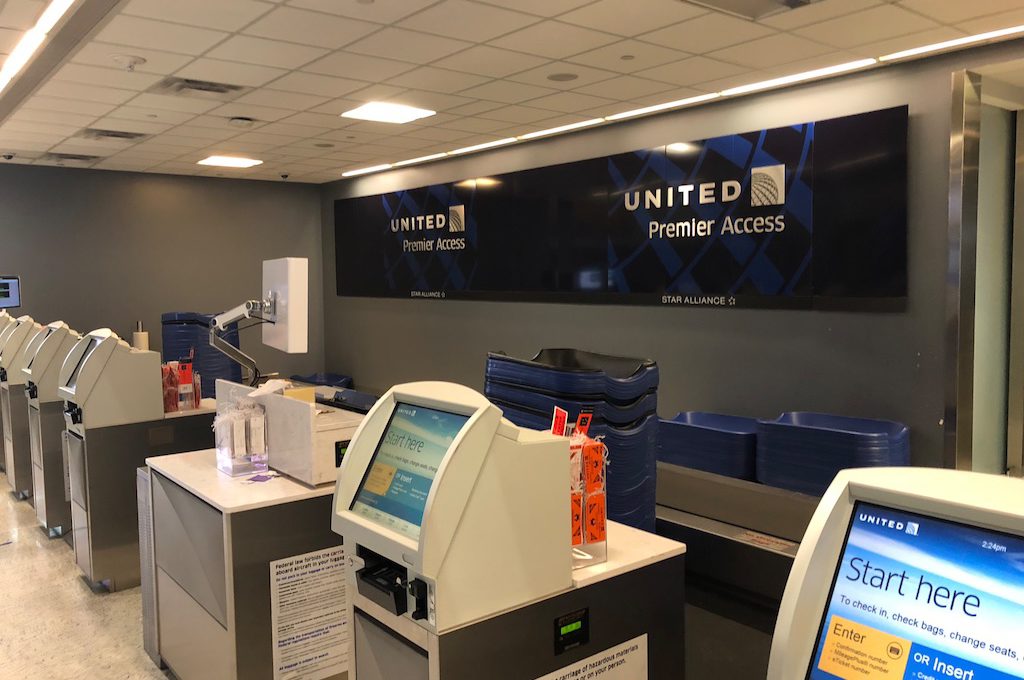
Do you have TSA Pre-Check?
The time to get through airport security will fluctuate but generally you are looking at about 15 to 20 minutes.
TSA Pre-Check can get you through security within five minutes at a lot of airports. In fact, in April 2021, 98% of passengers in TSA PreCheck lanes waited less than five minutes.
I’ve been using Pre-Check for several years and it feels like I consistently save myself about 10 minutes. On some occasions, when the security lines get hopelessly long, I know I save myself even longer than that.
You need to remember that just because you are enrolled in TSA Pre-Check, you are not guaranteed to get it every time on your boarding pass. You’ll probably have it 95%+ of the time but there is always a rare chance that you won’t get it which could potentially hurt you if you are cutting it close.
Even if you have TSA Pre-Check, you also want to prepare yourself in the event that you get hit with SSSS on your boarding pass.
This can be issued at random and it will require you to undergo an additional security screening. Sometimes the security screening lasts only a couple of minutes but other times it can be dragged out to 20 minutes plus.
This is one of the major reasons why I think cutting it close is risky because getting secondary screening could definitely cause you to miss a flight if things are very tight.
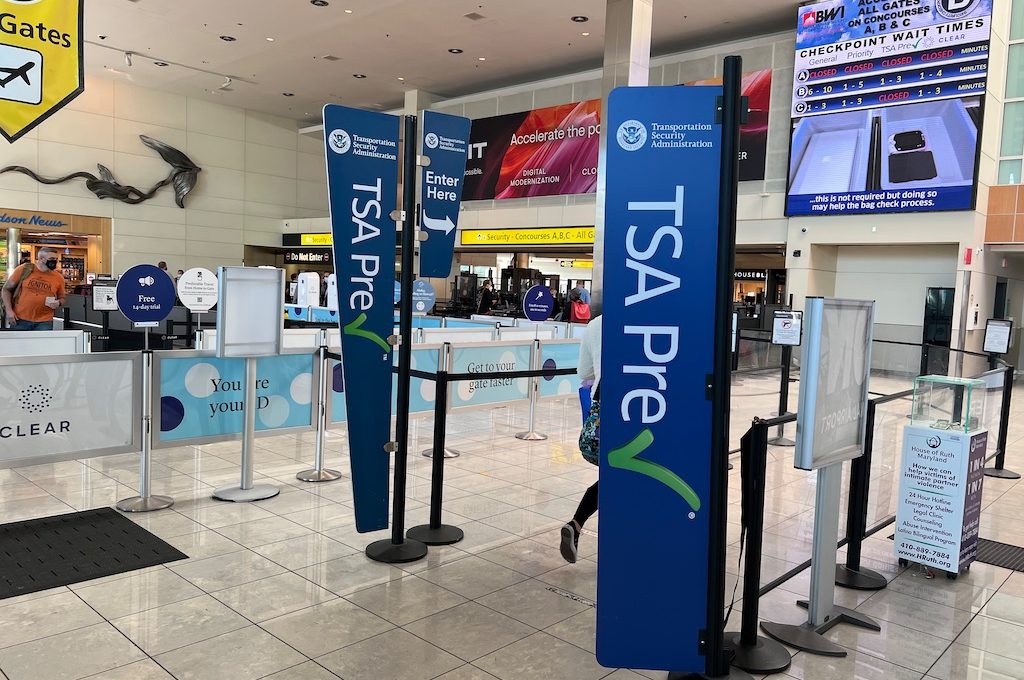
Do you have CLEAR?
CLEAR is a way to further expedite your airport security screening. If you have a CLEAR membership you get escorted to the front of the security line VIP style (whether you have TSA Pre-Check or not).
This one could be hit or miss.
There’s been a recent influx of new members which has slowed down the line at some airports. If the CLEAR line is understaffed it can build up pretty quickly and actually be a frustrating experience.
But overall it’s helped me shave off a few extra minutes by jumping ahead to the front of the TSA Pre-Check line.
The drawback with CLEAR is that sometimes it’s just not open and it’s still not available at a lot of airport security checkpoints (although the network is growing pretty quick).
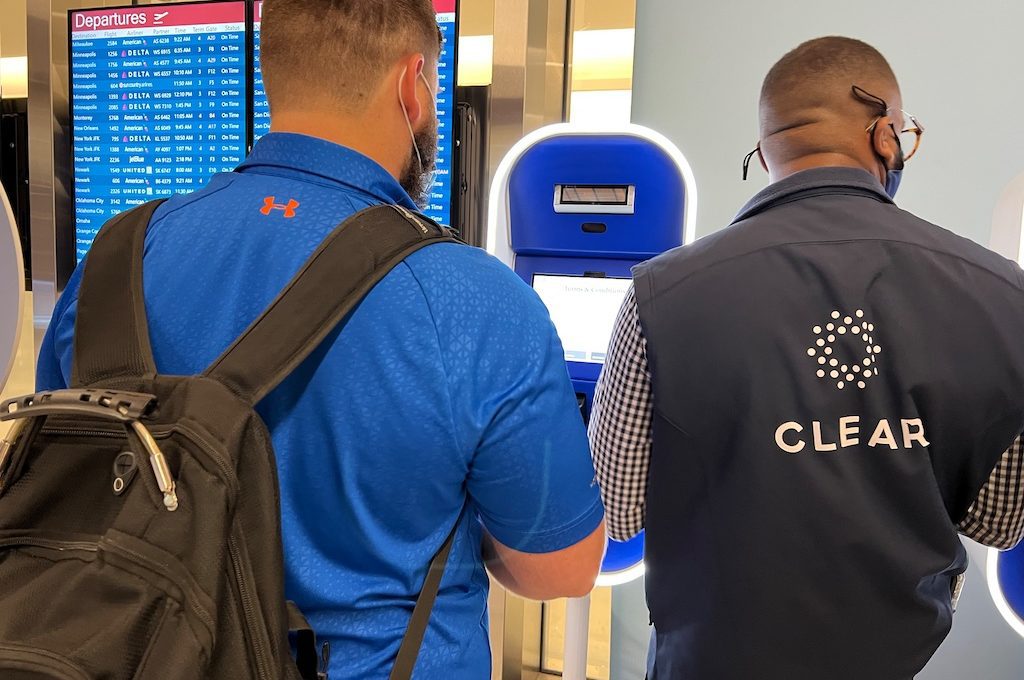
Do you know the airport layout?
Some airports will require you to jump on a tram or train to hop over to another terminal in order to get to your boarding area.
Airport trams are usually pretty efficient and can get you from one terminal to the other very quickly but if there are several stops and a lot of walking involved, that journey can take longer than you might expect.
Plus, if you end up getting on the wrong tram that can add a lot of time to your journey as well.
So if you are not familiar with the airport layout and have no idea if you will need to take a tram to get to your terminal then you need to factor in about 15 to 30 minutes that might be needed to get to your boarding area after you get through security.
Also remember that your gate and even your terminal can change at the last minute.
Lounge access or not?
One of the biggest considerations for when I arrive at the airport is whether or not I have lounge access.
If I have access to a quality lounge like a Centurion Lounge, United Club, Delta Sky Club, or some Priority Pass lounges, I will be much more open to arriving to the airport a couple of hours before my flight.
The reason is I can enjoy a free meal/drinks and relax in peace away from the madness that often is happening in the airport terminal or gate areas.
The drawback is that sometimes the lounges can be quite crowded and on some occasions you can’t even get in without waiting for quite a while.
Some lounges will limit you to entry no sooner than three hours prior to your departure time so keep that in mind.
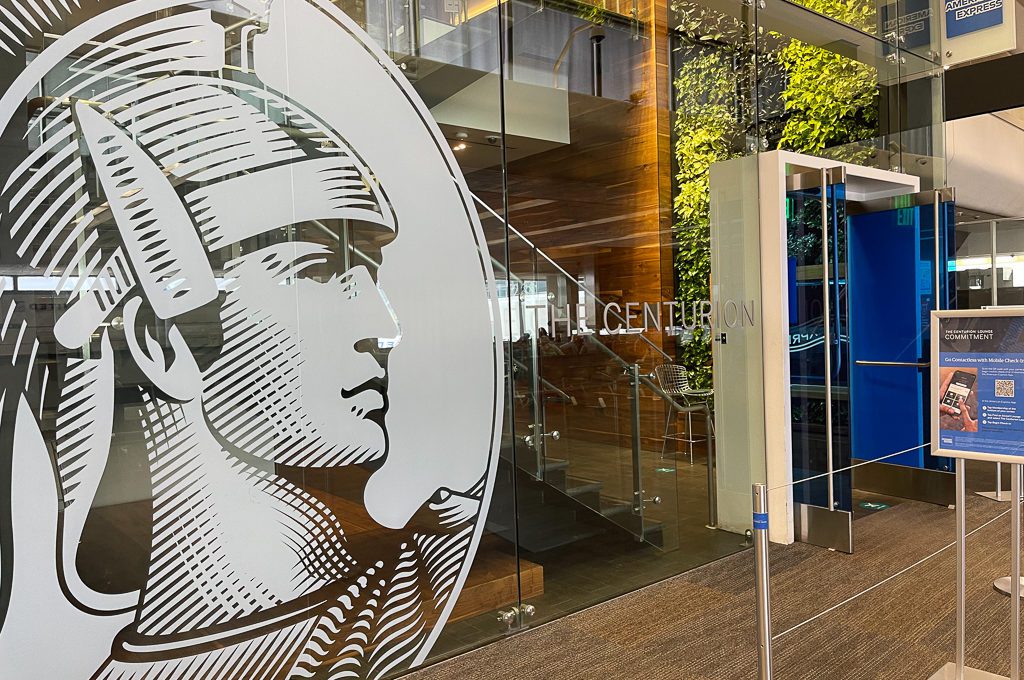
Are you going to need the overhead storage bin?
Overhead storage bins can be tricky for people who push things to the last minute.
Some flights have a lot of passengers with carry-on items and others have less — you really never know what your flight is going to be like.
If your flight is full of passengers with multiple carry-on items and you arrive toward the end of the boarding process you may find that there is no overhead storage bin space available to you. This may force you to check your carry-on bag which can be a frustrating experience.
Of course, if you are already among the last to board then this may not matter as much because you likely would not have overhead storage bin space anyway.
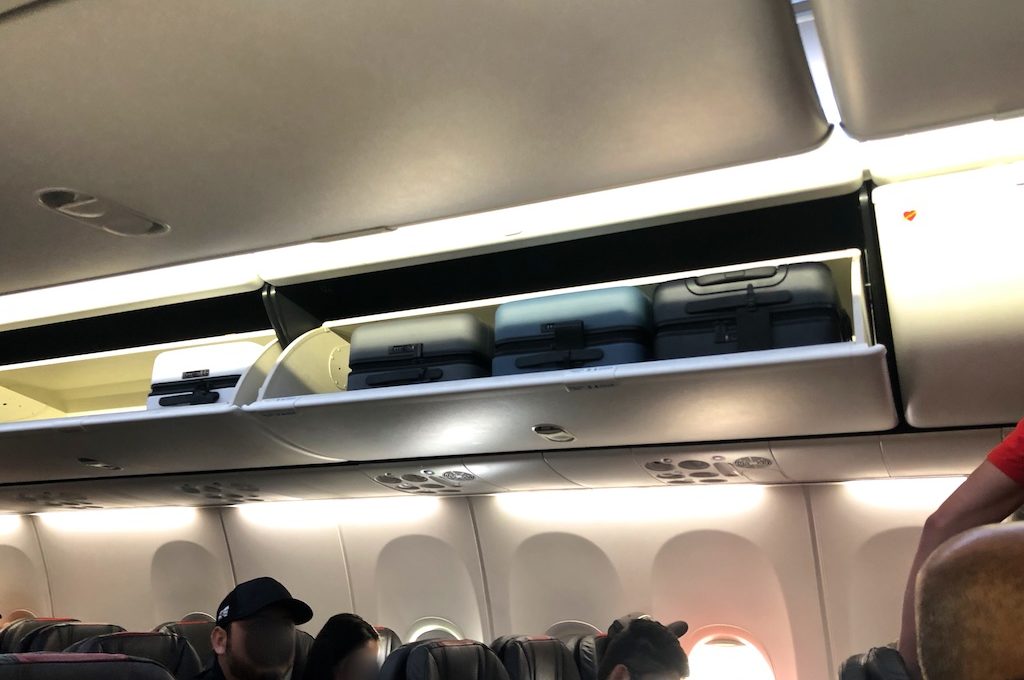
Are you utilizing pre-boarding?
Boarding usually begins 30 minutes to 50 minutes prior to the scheduled to takeoff time for a domestic flight and 45 to 60 minutes prior to an international flight.
If you are someone who wants to utilize pre-boarding then you want to make sure you are at the gate no longer than one hour prior to takeoff.
Pre-boarding is usually reserved for those with some sort of disability or special passengers like unaccompanied minors, both of which should allocate more time for things like check-in.
However, if you are a military member or have some type of top-tier status you might also want to get there early to take advantage of your early boarding opportunities.
Are you comfortable cutting things close?
At the end of the day, your ideal arrival time at the airport depends on how comfortable you are with cutting things close.
As mentioned for domestic flights, the cut off times for boarding the plane are usually about 15 to 30 minutes prior to departure.
If you have TSA Pre-Check and CLEAR, know your way around the airport, and have no checked baggage, then you could arrive at the airport about 50 minutes prior to your domestic flight and probably be just fine in a lot of cases.
Some people are okay with cutting things a little close like that but I personally would dread making that gamble each time I am headed to the airport.
I much prefer a less stressed experience getting through security, finding a lounge, etc.
Therefore, I try to always make sure that I am through security at least 30 minutes before boarding starts if there is no lounge. If I do have access to a lounge then that number is probably closer to 1.5 hours prior to boarding.
Final word
The general advice of arriving to the airport two hours before a domestic flight and three hours prior to international flight is usually good. But if you want to make better use of your time, you should consider all of the factors above and you will be be able to settle on a more accurate timeline for arriving at the airport.
Daniel Gillaspia is the Founder of UponArriving.com and the credit card app, WalletFlo. He is a former attorney turned travel expert covering destinations along with TSA, airline, and hotel policies. Since 2014, his content has been featured in publications such as National Geographic, Smithsonian Magazine, and CNBC. Read my bio.

